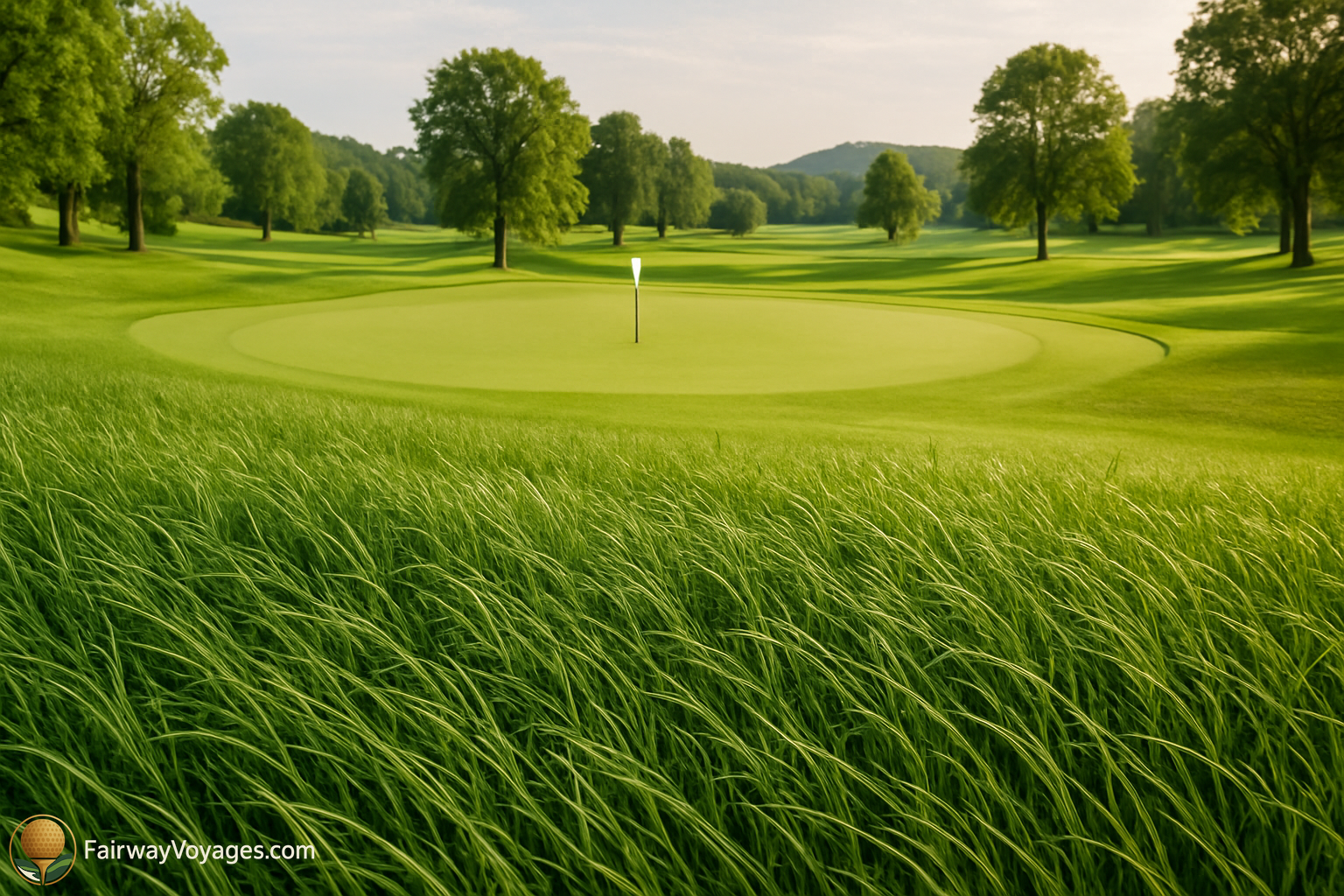The Role of Kentucky Bluegrass in Golf Course Turf Management

Kentucky bluegrass (Poa pratensis) is one of the most widely used cool-season grasses in North America, especially in areas with temperate climates. It is prized for its lush green color, fine texture, and dense growth habit, which make it visually appealing and functionally durable. Native to Europe, Asia, and the Middle East, Kentucky bluegrass was introduced to North America by early European settlers and quickly became a staple in lawns, parks, and sports fields. Its ability to spread through underground rhizomes allows it to form a thick, self-repairing sod that recovers well from wear and tear.
In the context of golf courses, Kentucky bluegrass is frequently used in roughs, tees, and sometimes fairways in northern regions where cool-season grasses are preferred. It offers a balance of aesthetics and performance, with an ability to handle foot traffic and moderate cart use when properly maintained. The grass's adaptability to a range of soil types and its relatively deep root system make it resilient under varying weather conditions, particularly in the spring and fall growing seasons. Though it can struggle in high heat or drought, Kentucky bluegrass typically goes dormant rather than dying, allowing it to recover once conditions improve.
Growth Characteristics and Maintenance Requirements
Kentucky bluegrass is a perennial cool-season grass with a growth cycle that peaks during the cooler months of spring and fall. It has a medium to slow establishment rate compared to other turfgrasses like perennial ryegrass, taking 14 to 30 days to germinate under ideal conditions. Once established, however, its rhizomatous growth allows it to spread and fill in bare areas, enhancing turf uniformity. This feature is especially useful on golf courses, where divots and wear from foot traffic can otherwise compromise playing conditions.
Mowing height plays a crucial role in the health and performance of Kentucky bluegrass. On golf courses, the optimal mowing height for roughs and tees is typically between 1.5 to 3 inches. Regular mowing at this height encourages lateral growth and increases turf density, reducing weed encroachment. Fertilization is also important, with nitrogen being the primary nutrient needed to sustain color and vigor. Best management practices suggest applying nitrogen in split applications during the growing season to avoid excessive top growth and reduce the risk of disease.
Climate Suitability and Regional Usage
Kentucky bluegrass performs best in USDA Hardiness Zones 3 through 7, which include much of the northern United States. Its cold tolerance makes it a logical choice for golf courses in the Midwest, Northeast, and upper elevations of the Intermountain West. It thrives in areas with well-distributed rainfall or irrigation and temperatures that remain moderate during the growing season. Unlike warm-season grasses, Kentucky bluegrass maintains its green color well into fall and greens up early in the spring, providing longer periods of aesthetic appeal.
In regions with high summer temperatures or prolonged drought, such as the transition zone or southern U.S., Kentucky bluegrass may require supplemental irrigation and careful water management. Its water needs can be high, particularly during establishment or recovery from dormancy. Turf managers in these regions may choose to blend Kentucky bluegrass with more drought-tolerant species such as tall fescue to increase resilience. Hybrid blends can also offer greater disease resistance and tolerance to environmental stresses, making them a strategic option for specific course areas.
Compatibility with Other Turfgrasses
One of the strengths of Kentucky bluegrass is its compatibility with other cool-season grasses, allowing for blends and mixtures that improve overall turf performance. It is commonly mixed with perennial ryegrass to improve initial establishment, as ryegrass germinates faster and provides quick cover. Once Kentucky bluegrass is fully established, its rhizomatous growth pattern allows it to eventually dominate and maintain turf density. This transition is advantageous on golf courses that require both immediate playability and long-term turf stability.
In shaded areas or those prone to compaction, Kentucky bluegrass may be combined with fine fescues such as creeping red fescue or chewings fescue. These species enhance shade tolerance and require lower nitrogen inputs, which can help reduce maintenance costs. In colder climates, Kentucky bluegrass blends may be used exclusively, relying on its winter hardiness and self-repairing capacity to endure frost heaving and ice damage. Strategic use of mixed turfgrasses helps golf course superintendents optimize playing conditions across diverse course environments.
Pest and Disease Considerations
While Kentucky bluegrass is generally resilient, it is susceptible to certain pests and diseases that can impact its performance on golf courses. Common issues include leaf spot, dollar spot, and rust, which tend to emerge under conditions of high humidity and poor airflow. Proper cultural practices such as mowing, aeration, and balanced fertilization are essential to minimize disease pressure. In some cases, fungicides may be used as part of an integrated pest management (IPM) approach to protect turf health.
Insect pests such as white grubs and billbugs can also pose challenges, particularly during warm periods when larvae are active in the soil. Monitoring and early intervention are key to preventing damage that can lead to thinning or bare patches. Kentucky bluegrass's rhizome system provides a degree of recovery from minor damage, but persistent infestations may require reseeding or sodding. Selecting improved cultivars with enhanced disease and insect resistance is an effective strategy for long-term turf sustainability.
The Aesthetic and Playability Factors
Aesthetics are a significant consideration on golf courses, and Kentucky bluegrass delivers a rich, green appearance that enhances the visual appeal of the landscape. Its fine to medium texture provides a uniform playing surface in roughs and tees, contributing to the overall quality of the course experience. When well-maintained, the grass produces a dense, upright growth that resists divoting and provides predictable ball response. This consistency is especially valuable for amateur and professional golfers alike.
From a playability perspective, Kentucky bluegrass offers moderate resistance to golf ball roll in the rough, making it fair but challenging for recovery shots. On tees, it forms a stable platform for ball placement and resists compaction from repeated foot traffic. Its ability to recover from divots and wear ensures that playing conditions remain acceptable even during high-use periods. These attributes contribute to the grass's continued popularity among golf course architects and turf professionals.
Overall, Kentucky bluegrass remains a key component of turfgrass management for golf courses in suitable climates. Its visual appeal, durability, and compatibility with other grasses make it a reliable choice for maintaining high-quality playing conditions. Ongoing research and breeding programs continue to develop improved cultivars with enhanced disease resistance, drought tolerance, and environmental adaptability. As sustainability becomes an increasingly important aspect of turf management, Kentucky bluegrass will likely remain central to environmentally responsible course maintenance strategies.
